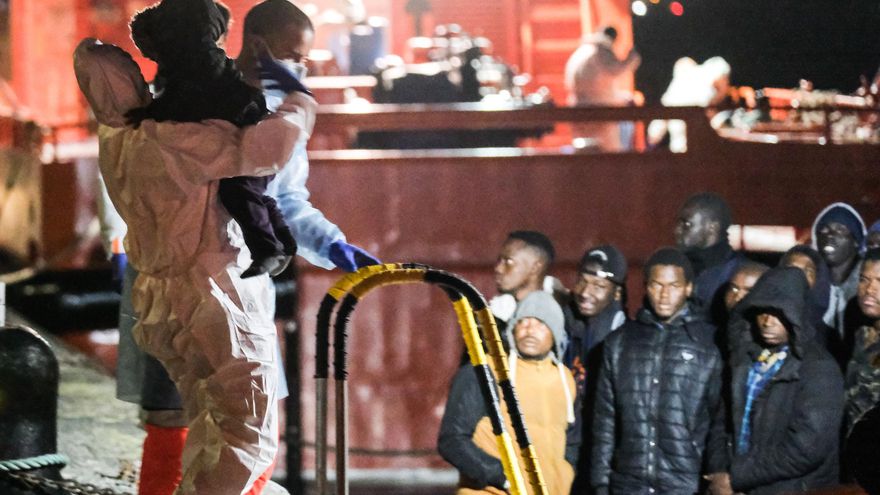
The director of the Immigration Observatory in Tenerife, Vicente Zapata, argues that the Canary Islands lack a roadmap for this phenomenon and assume that it is a transit territory to which “about twenty or thirty thousand people” will arrive each year, who must be given “a welcome with capital letters”. During his appearance before the study commission on immigration in the Parliament of the Canary Islands Zapata affirmed that the arrival of thousands of migrants each year to the Islands “It should not be a problem”, if one takes into account that the Archipelago receives millions of tourists every year. What is needed, he added, are permanent reception structures that are versatile, that is, that also respond to other social needs.
Zapata stated that talking about the Canary Islands implies talking about human mobility, which has been a fundamental element in the sociodemographic base and the development of the region that outlines an “increasingly multicultural” society, since at the beginning of the 20th century one in ten people was foreign and now it is one in five. Faced with this reality, “what is it that the Canary Islands do not have?” asked the expert, for whom the answer is “a highly consensual idea, a roadmap to know where to go”, since the only Canarian pact for immigration It was signed twenty years ago.
“We have not created solid management structures for the multiple challenges” despite the fact that the Canary Islands have experienced “almost everything”, with the arrival in recent years of more than 150,000 people who have been lucky enough that their boats were not lost in the Atlantic, “but we have not been able to receive a number that we do not know,” he declared. In his opinion, there are many lights on the horizon and greater complicity and protagonism of migrants must be sought, since one of the main challenges is “that our action should increasingly reflect our diversity.” In this area, Europe must also attend to its border regions, “more so if they are islands and more so if they are remote” because “policy with capital letters and at all levels is urgently needed to promote the necessary change”.
Zapata specified that when he talks about immigration he has in his mind “the 400,000 people” migrants who live in the Canary Islands. “If we are not clear about what we have to do here, how are we going to influence it outside?”, he affirmed. That is why he considers that this roadmap is needed to strengthen “with a look that is not only political, but also technical, professional, scientific, business and citizen.” In this regard, he considered that “he would not wait for anyone” to start that roadmap. “If we wait for them to give us a turn, we have a problem,” and the Canary Islands can be “an inspiring agent for others,” he said.
The Unified Association of Civil Guards (AUGC) yesterday took advantage of his presence in the regional Chamber to emphasize the “urgency” of increasing, at least, 1,000 agents in the Canary Islands to attend to security in the Islands, coastal management and migratory flows, in addition to demanding a coordination protocol and the renovation of means, since the boats are obsolete. Juan Antonio Fernández, general secretary of the Association, told the commission that the exponential increase in the arrival of migrants has had an “immediate and direct” impact on the Civil Guard service, which is the competent body in matters of control of immigration.
Fernández indicated that there are 3,250 members of the corps on the Islands, a “clearly insufficient” figure because at least 4,450 troops would be needed to give an adequate response to the insularity, the large number of floating population, the tourist activity and the condition of the outermost region. . The understaffing in the workforce directly affects the training of the guards who must deal with migration, to which is added the lack of protocols for a coordinated and uniform action “not in the Civil Guard itself, but with the rest” agents involved in immigration control.
















